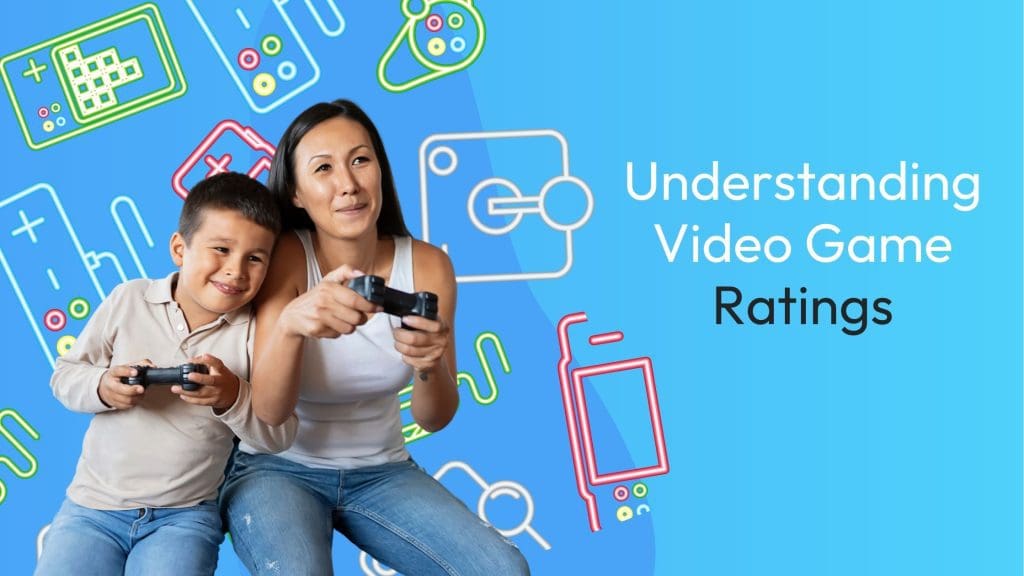A quick guide to decoding how game ratings are determined and how to navigate them. This post will help you with understanding video game ratings so you can decide what games are appropriate for your child to play.
Video game ratings, like movie ratings, are meant to be informative. Video games are given ratings so adults and caregivers can understand the content of a given video game to determine whether or not it is age-appropriate for their child to play. Much like you might tell your 10-year-old that an R-rated or PG-13-rated movie is too mature for them, a T or M rating on a video game is likely also too mature for that child.
Video game ratings in the United States are put forth by the ESRB, or the Entertainment Software Rating Board. In Europe, most video game ratings are governed by the PEGI, or the Pan European Games Information. These two groups work diligently toward giving video games ratings guides so that parents are able to mitigate the amount of inappropriate material their kids are exposed to while gaming on any device. From Roblox to Fortnite and every game in between, video game ratings help you determine which games your child is developmentally ready to play.

Video game ratings: a breakdown
There are typically seven different ratings a video game can earn based on the maturity of the audience it is intended for.
Those ratings are:
E- Everyone. Content is appropriate for all ages.
E 10+– Everyone 10 and up. Content is appropriate for children over the age of 10.
T- Teen. Mild explicit content can be expected.
M- Mature, 17+. Content should not be viewed by kids and is inappropriate for young audiences.
AO- Adults Only. Content is extremely explicit and gamer discretion is advised.
RP- Rating Pending.
RP 17+– Rating pending but game is intended for a mature audience.
You might also sometimes see the rating EC on computer games geared toward young learners. EC stands for Early Childhood, and these games are appropriate, both content-wise and difficulty-wise, for the youngest gamers and learners.
Video game ratings: decoding the letters
Just like movies have a scale of ratings, from G for general audience to R for restricted, video games have a slew of letters to represent the wide variety of content in video games. An E rating means a game is intended for all audiences, whereas an M signifies a game is only appropriate for mature viewers.
A game’s rating is affected by several different factors, including:
- Violence, blood and gore
- Language
- Sexual content
- Drugs and alcohol
- Gambling
A video game’s rating doesn’t have anything to do with a game’s difficulty level, which is a common misconception. A game can be fairly easy for a 10-year-old to play in terms of complexity but be inappropriate because of sexual content and language and therefore rated M. On the other hand, a video game rated E doesn’t necessarily mean it will be too boring or easy for your teenager to play. An E rating simply means that the game’s content is appropriate for players of all ages.
Video game ratings: keeping your kids safe while gaming
Although video game ratings can help parents determine which games are and aren’t appropriate for their children in terms of content, explicit material isn’t the only worry most parents have when their kids sit down to game. Online bullying is a growing threat these days to gamers of all ages. At Kidas, we are here to help. Kids should be able to game without the worry of cyberbullies, and parents shouldn’t have to stress about who their kids are talking to while they enjoy their favorite games. Get more information about Kidas here.